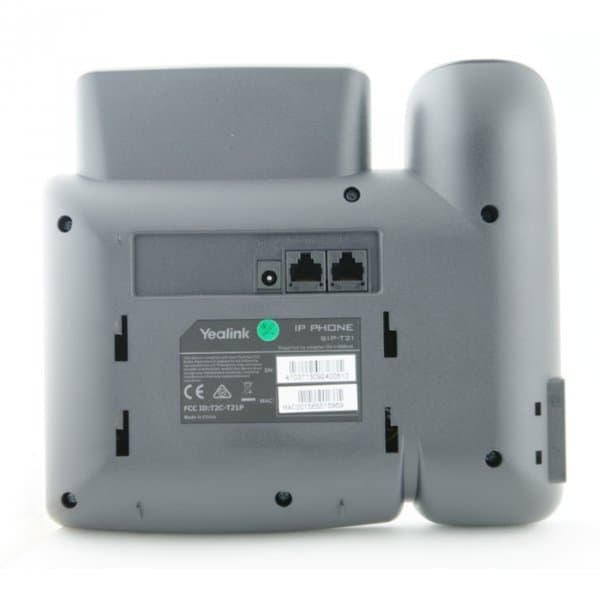Most corporate networks today use IP telephony. This means that the phones are connect to the same network and use the same cabling as other network devices, such as workstations or routers. Since offices usually have only a single UTP cable to each desk, most of the IP phones today include a small switch that enable you to connect your PC to the phone sitting on the desk, and then connect the phone to the local network.
Consider the backside of an IP telephone Yealink T21:
As you can see from the picture, this phone has two UTP ports. One port is connected to the local network, while the other port can be connected to the PC.
The port on the phone connected to the switch can carry both data and voice traffic. To enable this, we need to define two VLANs on the switch port – data VLAN and voice VLAN. Here is how we can do that:
SW1(config)#vlan 5 SW1(config)#vlan 20 SW1(config)#int fa0/1 SW1(config-if)#switchport mode access SW1(config-if)#switchport access vlan 5 SW1(config-if)#switchport voice vlan 20
We’ve created two VLANs – VLAN 5 that will be used for data sent by the PC and VLAN 20 for IP phone’s voice traffic. We’ve then placed the port into both VLANs. The keyword voice indicates that the VLAN 20 will be a voice VLAN.
To verify that the interface indeed carries data from both VLANs, we can use the show interfaces Fa0/1 switchport command:
Switch#show interfaces fa0/1 switchport Name: Fa0/1 Switchport: Enabled Administrative Mode: static access Operational Mode: static access Administrative Trunking Encapsulation: dot1q Operational Trunking Encapsulation: native Negotiation of Trunking: Off Access Mode VLAN: 5 (VLAN0005) Trunking Native Mode VLAN: 1 (default) Voice VLAN: 20 Administrative private-vlan host-association: none Administrative private-vlan mapping: none ...
The lines Access Mode VLAN: 5 (VLAN0005) and Voice VLAN: 20 indicate that the interface is indeed carrying traffic from both VLANs.
Some IP phones can be automatically configured with appropriate VLANs using protocols such as LLDP or CDP. However, on some models you will need to manually configure data and voice VLANs on the phone using its web interface.
Download our Free CCNA Study Guide PDF for complete notes on all the CCNA 200-301 exam topics in one book.
We recommend the Cisco CCNA Gold Bootcamp as your main CCNA training course. It’s the highest rated Cisco course online with an average rating of 4.8 from over 30,000 public reviews and is the gold standard in CCNA training:

